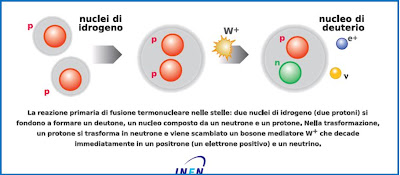

An unstable fission fragment with the excess of neutrons undergoes β − decay, where the neutron is converted into a proton, an electron, and an electron antineutrino. In a nuclear reactor occurs especially the β − decay, because the common feature of the fission fragments is an excess of neutrons (see Nuclear Stability). This is due to the fact that antineutrinos are produced in a negative beta decay. Nuclear reactors are the major source of human-generated antineutrinos. Nuclear Reactor as the Antineutrino Source

Only antineutrinos with an energy above the threshold of 1.8 MeV can cause interactions with the protons in the water, producing positrons and neutrons. All detection methods require the neutrinos to carry a minimum threshold energy of 1.8 MeV.
#Define neutrino free
This interaction is symmetrical to the beta decay of free neutron, therefore it sometimes referred to as inverse beta decay. The antineutrino detection (1995 Nobel Prize for Frederick Reines and Clyde Cowan) is based on the reaction: Since neutrinos do not ionize matter, they cannot be detected directly. In the Sun, neutrinos are produced after fusion reaction of two protons during positive beta decay of helium-2 nucleus. Billions of solar neutrinos per second pass (mostly without any interaction) through every square centimeter (~6 x 10 10 cm -2s -1) on the Earth’s surface. On the other hand the most powerful source of neutrinos in the solar system is doubtless the Sun itself. Therefore each nuclear reactor is very powerful source of antineutrinos and researchers around the world investigate the possibilities of using antineutrinos for reactor monitoring. In a nuclear reactor occurs especially the β − decay, because the common feature of the fission products is an excess of neutrons (see Nuclear Stability). Currently (2015), it is not resolved, whether the neutrino and its antiparticle are not identical particles.Īntineutrinos are produced in the negative beta decay. Also antineutrinos (as neutrinos) are very penetrating subatomic particles, capable of passing through Earth without any interaction. Neutrinos are gravitational and weakly interacting subatomic particles with ½ unit of spin. Neutrinos and antineutrinos belong to the family of leptons, which means they do not interact via strong nuclear force. The antineutrino is an elementary subatomic particle with infinitesimal mass (less than 0.3eV.?) and with no electric charge. I find that our determination of inflationary parameters is stable against assumptions about the neutrino sector.Antineutrinos are the antiparticles of neutrinos. I then discuss correlations between neutrino and inflationary parameters. Therefore, such models exhibit an even stronger preference for the normal ordering, and their viability could be jeopardized should near-future laboratory experiments determine that the mass ordering is inverted. In non-phantom dynamical dark energy models, the upper limit on the sum of the neutrino masses becomes tighter than the $\Lambda$CDM limit. Finally, I discuss implications of correlations between neutrino parameters and other cosmological parameters. I show that failure to define the bias appropriately will be a problem for future LSS surveys, and propose a simple recipe to account for the effect of massive neutrinos on galaxy bias.

Moreover, in the presence of massive neutrinos, the usual definition of bias becomes inadequate, as it leads to a scale-dependence on large scales which has never been accounted for. I propose a method for calibrating the scale-dependent galaxy bias using CMB lensing-galaxy cross-correlations. Secondly, I will discuss how galaxy bias represents a severe limitation towards fully capitalizing on the neutrino information hidden in LSS data. I show how cosmological data exhibits a weak preference for the normal neutrino mass ordering because of parameter space volume effects, and propose a simple method to quantify this preference. I report on the analysis leading to the currently best upper limit on the sum of the neutrino masses of $0.12\,$. Firstly, focusing on Large-Scale Structure (LSS) data, I will show that current cosmological probes contain a wealth of information on the sum of the neutrino masses. In this thesis, I describe a number of recent important developments in neutrino cosmology on three fronts.


 0 kommentar(er)
0 kommentar(er)
